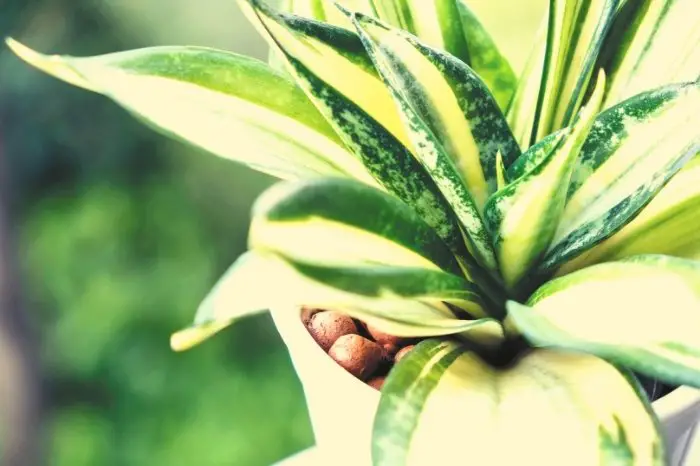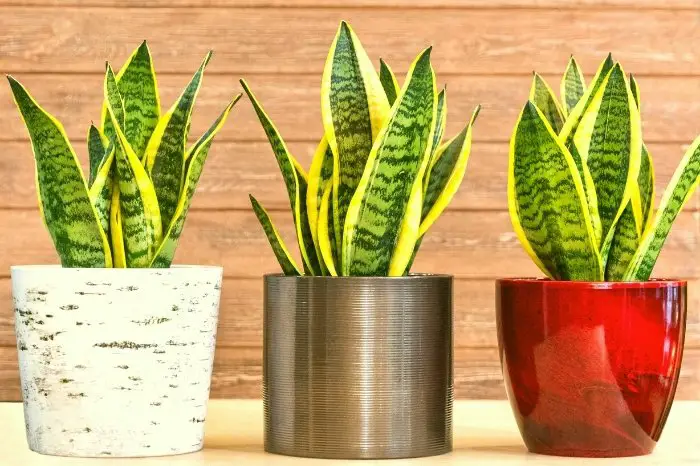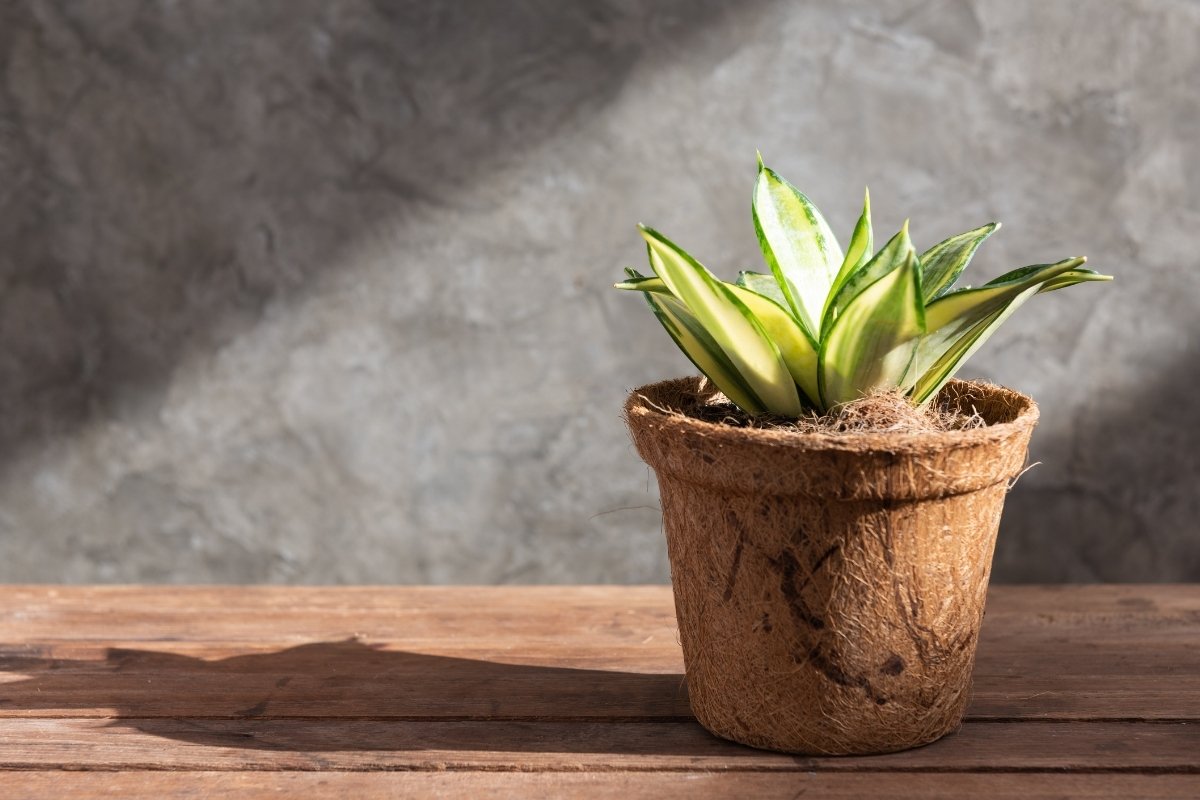Last Updated on May 6, 2022 by Fabiola L.
Even though snake plants are very hardy plant species that can withstand some drought, the root of snake plants can still experience dryness. Dry snake plant roots can happen when you probably forget to water the plant for a very long period. Then the overall moisture content begins to decrease drastically.
Water is very crucial to the development of living things generally including plants such as snake plants. Even though snake plants’ common problem when it comes to watering is over-watering, the plant can still experience under-watering.
When we talk about under-watering snake plants, we may not necessarily mean not supplying enough water to the plant whenever we water it. But it usually means that there has been a huge gap between watering schedules.
Dry snake plant roots are a result of not watering the plant for a long duration. So, if this has happened to you and you’re wondering if there is anything that can be done to revive your plant, we will discuss this here.
Dry Snake Plant Roots: Reasons Why This May Occur
Two main things that can cause your snake plant roots to become dry are:
- Under-watering
- Aging
Dry snake plant roots happen when the soil has been left unwatered and the soil has been completely dried for a very long time.
When the overall moisture content in the snake plant reduces to a level that is unbearable to the plant, then you may notice a negative result inform of dried roots or even dead leaves.

Now, when it comes to telling if your snake plant lacks water you may be confused about how to determine if your plant really needs water. This is because the snake plant is a succulent plant that doesn’t need too much watering so that it does not experience over-watering.
Another reason why the root of your snake plant may become dry is because of aging. This is mainly because once this snake plant gets to the final point or end of their life cycle, the efficiency to which the roots work reduces drastically.
So, once the plant has gotten to the end of their life cycle, they become dry and lifeless. But this process is a slow process and can take up weeks to see the result of root dryness. The good news is that you may still have the chance to restore your plant.
So, let’s look into some tips on how you can restore your snake plant dryness.
Tips To Resolving Dry Snake Plant Roots Problems
The following tips can help you revive your dry root snake plant problems and they can also help with preventing this issue:
1. Inspection Of The Root Of Your Snake Plant
The first step to resolving the situation is to inspect your plant. We don’t just want to do guesswork but we want to have a proper understanding of what is going on with our plant so we do a thorough inspection.
From inspection, it may even help deduce if there is an existing problem with the plant that needs to be addressed first.
2. Root Assessment And Resolve Accordingly
After inspection and if you find any issues, you should solve the situation first. The root of your snake plant may become dry from sunburn or heatwaves.
Click Here to Get Info about:
3. Damaged Roots Should Be Eliminated From The Plant
Sometimes, when the root of your plant is damaged or has issues, it may cause the root to become dry. This is because once there is an issue with the plant’s root, it can affect the plant’s ability to extract water and nutrients from the soil.
So, if you have any damaged roots, simply cut them off with clean scissors. Doing this can also force and help the plant to produce new roots.
However, ensure you trim the damaged root with care and avoid taking out too many roots at a time.
4. Transplant
Transplanting your snake plant into a bigger pot or new pot can as well help your plant after you must have trimmed off the dried root. Doing this can assist your plant to grow into a better standard plant and keep the plant safe from a fungal infestation and other similar problems.
Repotting in the same old pot is also fine. Just ensure the soil being used is in good condition.
5. Water Your Plant
If you’ve not watered your plant in a long time the roots can get dried and the leaves can also shrink. When you water your soil, it will help rejuvenate the plant.
6. The Plant Should Be Kept Indoors
Too hot temperatures outdoors can make the plant go into survival mode. Hence, this can cause the plant to shed some leaves and even roots.
So, to help restore the situation, simply move your plant indoors and provide it with indirect sunlight for some hours.
Check Out Do Ferns Attract Mosquitoes?
7. Monitor Moisture Content In The Soil
Checking the moisture level can always help with knowing if the plant needs to be watered or not.
8. Keep A Close Look At The Plant For A Month Thereabout
You will still need to always monitor the plant to know its status even after you’ve done the required things to revive your plant.
After about a month, you can check the roots by gently removing the plant from the pot to see if new healthy roots are growing.

Additional Say
Dry snake plant roots can be resolved if you do the right things on time. We have listed some tips to help you restore your snake plant roots that may be drying out and we hope you find them helpful.
FAQ’s
Why are my snake plant roots dry?
Two main things can cause your snake plant root to dry up and they are under-watering and aging. Also, not watering your snake root for a very long time can decrease the moisture drastically and cause the plant root to dry.
How do you revive a dried out snake plant?
You can revive a dried root out snake plant by doing the following: relocate the plant to a shaded spot when the temperature is extremely high, change the potting soil, remove damaged leaves and roots, mist the plant, and water when the soil is very dry.
How do I know if my snake plant has root rot?
When your snake plant is suffering from root rot, you may begin to notice the root turn brown and mushy. Then when this root rot progresses, the leaves begin to turn yellow, wilt, or droop.
Can a snake plant recover from root rot?
It is possible to save your snake plant from root rot only if you notice it on time and act early enough. But if the soil has been waterlogged for a long time, the plant can develop extreme root rot that causes fungal diseases and can kill the plant.
Read more about Snake Plant Broken Leaves – 7 Things You Should Know In Order To Maintain Healthy Snake Plant Leaves

Eunice is a gardener who loves to play in the dirt. She starts her day early in the morning, watering her plants and tending to her garden. She loves the smell of freshly cut grass and the feeling of sunshine on her back as she works. She‘s a master at creating beautiful flower arrangements and can often be found humming a tune as she tends to her plants. When she‘s not gardening, she loves to read books about nature and share her knowledge with others. Eunice loves gardening so much that she‘s even been known to talk to her plants!



